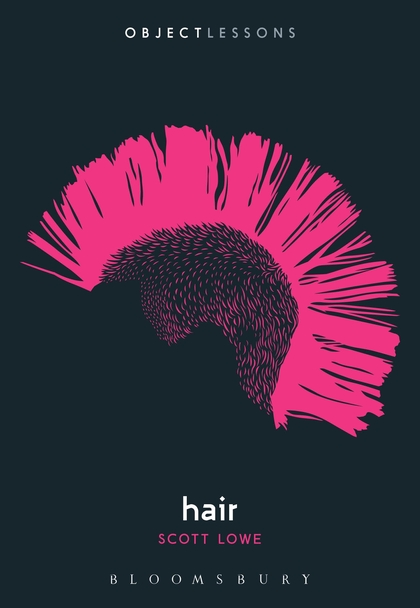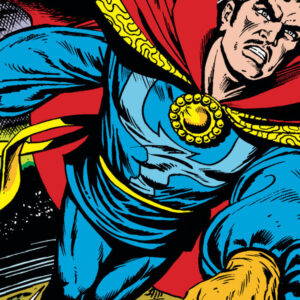Human hair has a remarkable mystique. Even though hair and nails are very similar in composition and appear to be equally useful for the working of sympathetic magic, as keepsakes they just don’t have the same force of attraction or hold comparable sentimental value. An envelope of Mick Jagger’s locks, trimmed back in the 1960s, sold at auction in 2013 for $6,000 (the money went to charity), while in 2011 a clipping of Justin Bieber’s hair went for $40,000 on eBay. I doubt Mick’s or Justin’s toenail scraps would go for anywhere near as much, though I have no hard evidence. It appears that even modern, scientifically literate people, who certainly know better, somehow think that hair cuttings provide a link to the spirit of the person from whom the hair was taken.
Collecting and saving Muhammad’s head and beard hair was important from the beginning of Islam. To this day, there are a number of Muslim holy sites that draw their fame from the hairs of Muhammad that they supposedly possess. Pilgrims travel great distances to bask in the spiritual power they believe radiates from the holy hair. Perhaps the most famous site is in Kashmir, a great distance from the areas where the Prophet lived and died. How Muhammad’s hair got there is nearly as mysterious as the unknown ways pieces of the true cross travelled to the far reaches of Europe.
Even strict Muslims accept a measure of reverence for Muhammad, the most perfect of men, but for many the veneration of his hair crosses the line into idolatry. Should a group like the Islamic State overrun one of the holy sites preserving hairs from the Prophet’s head or beard, we can expect to see it razed and the relics destroyed.
Supernatural hair
The belief that a sorcerer can manipulate victims through their discarded hair cuttings or nail clippings is found around the globe, leading cultures to take elaborate precautions with material we moderns leave on the barbershop floor to be swept up and thrown out with the trash. A friend from Ghana, who was raised in a modern, educated Christian family, reports that his mom carefully collected his hair clippings whenever she took him to a barber. When he asked why, she claimed she was just following a silly old-wives’ belief, simple superstition, but he noticed that she always took care that his hair was well-hidden inside the garbage, in a way that would foil discovery, and she made certain it was never burned.
Despite the exalted state of the human head in Hindu purity laws—few places on the body are more sacred and more easily defiled than the head—barbers in India are low caste. High caste Hindus will, of necessity, allow low caste barbers to touch their heads, but it is customary to drop payment on the ground for the barber to pick up, so defiling is the touch of a barber’s hand. Ritual purification by hair washing is needed immediately after a haircut to restore caste. Hair clippings are carefully destroyed, because to this day in India, many villagers believe that the hair could be mis-used by sorcerers.
The idea that the soul can be purified by washing the hair of the head is also found in African religions; the belief was carried to the New World by enslaved Africans who created Yoruba-Catholic religious traditions like Voudou and Santeria that preserve many traditional African themes and practices, including soul purification through ritual hair washing.
As already mentioned, during the Qing dynasty (1644–1911), all men in China were required to adopt the hairstyle of the Manchu conquerors, thereby signifying their submission. Only Buddhist and Taoist monks were exempt. Tampering with the style in any way was an act of treason that was punished with death. There was initially great resistance to this barbarian hairstyle, but over time men became proud and protective of their long queues. In 1768 when stories began spreading about mysterious, inexplicable queue thefts, the braids cut right off the heads of unsuspecting men without their knowledge, the public set up a hue and cry.
Soon several provinces were caught up in the hysteria. The spreading panic threatened to get out of hand. Though the actual number of missing queues turned out to be few (or perhaps zero), panic set in. The culprits were rumored to be renegade Buddhist monks, allied with beggars and assorted ne’er-do-wells, who were almost certainly engaged in sorcery, stealing souls as well as hair. Part of the problem was that Buddhist ordination masters often kept a tuft of hair cut from the queue of each monk they ordained, collected during the ceremony of head shaving, so in fact some monks likely were carrying bits of braids among their meager possessions. In a state of generalized panic, this looked like irrefutable evidence of sorcery, or at least some kind of misbehavior. Why would a shaven monk be carrying locks of hair, if not for dark magical purposes?
According to the rumors, the life force of the queue-cutting victims was stolen with their hair and magically transferred to full-sized paper cutouts of humans and horses, which would then come alive and be sent out on robbing expeditions. The descriptions of the actual processes by which this could be done evolved as the rumors spread, and the only hard information we have comes from confessions, usually forced by torture. As we now know, such information is often wildly inaccurate. Still the basic outline is clear.
The culprits started the process by blowing a stupefying powder into a victim’s face, instantly rendering him helpless. Though this sounds improbable, several victims testified that they had been knocked out or incapacitated by this method. Next the thief snipped off the end of the victim’s queue and recited magical incantations over it, transferring the victim’s soul to the hair clipping. Later the hair would be tied to a paper doll that, animated by the force of the victim’s stolen soul, would be sent out, like a flat zombie, to do the master sorcerer’s evil will.
The evidence of actual sorcery was sparse, as we might imagine, but the societal panic was real. The highly educated men who led China tended to be agnostic in matters of the spirit, but the masses were not. Therefore the magistrates and authorities of China prosecuted the reported sorcerers with diligence, even as they discounted the reality of sorcery. Social order was threatened and must be preserved. If a few innocent monks and beggars had to be tortured, well, that was a small price to restore stability. As the “Satanic Panic” in the United States during the 1980s and the excesses of the current terrorism scares demonstrate, modern people are still susceptible to episodes of mass hysteria. Like the panicked peasants during the queue scare, we too can be calmed by a few arrests, the torture of suspects, and semi-magical bureaucratic rituals. (“Remove your shoes and laptops and place them in separate tubs. Take off your belt, and make sure you empty everything from your pockets.”) Fortunately for the Chinese, the queue scare only lasted for a few months. American Indians also believe that the soul is, or can be, held within locks of hair.
Once in North Dakota, I participated in a sweat lodge ceremony led by a respected Lakota pipe holder (spiritual leader), during which I heard several miraculous tales, one involving hair. The sweat lodge was a great deal hotter than I expected, so the finer details of the stories are a bit hazy.
Before we began, the leader told us the cautionary tale of a “bad person” at one recent ceremony who had harbored evil thoughts during the sweat. In the middle of that ceremony, while the sweat lodge was tightly closed, this bad person had mysteriously vanished into thin air, later to be found dazed and disoriented in a small town many miles away, still sweating, wearing only boxer shorts.
An hour into our ceremony, when the heat reached its greatest intensity, I remember shivering convulsively, my pulse pounding like an internal piston against the inside of my skull. I desperately tried to think of something especially wicked in the hope that I too might be teleported to the streets of Devil’s Lake. Though I dimly realized it might be awkward to be found stumbling down Main Street in my underwear, at that moment it seemed like my best chance for survival. Unfortunately, I was unable to think of anything at all.
Miracles rarely happen on demand.
At some point, the spiritual leader recounted how he had recently released the soul of a young Indian girl who had died as a toddler a few years earlier. Before she was buried, her braided hair had been cut off and carefully saved. On the anniversary of her death, a group had brought her braids into the lodge, where they held a sweat in her honor. At the climax of the ceremony, the spiritual leader released the girl’s soul. The mourners all claimed to hear her high-pitched cries fading in the distance, as her spirit spiraled up through the night sky into the Milky Way. We were told that the girl’s soul had been held in her braids, and they were necessary to release her from this world. I never discovered how the process worked.
The belief in the power of hair to trap souls and their various energies is found in Europe and North America as well, though we don’t seem especially conscious of it. We can look at a few amusing examples. My favorite is the custom of eighteenth-century British lovers to give each other clippings of their pubic hair. Some rakes even wore clippings of their paramour’s pubic hair in their hatbands. (I assume they only honored a single lover at a time in this manner; sporting multiple tufts on one hat might appear ostentatious, or vulgar.) Pubic hair was enthusiastically preserved in all sorts of settings in the Georgian era. According to Tony Perrottet, the archives of the museum at St. Andrews still hold a locket containing curls of pubic hair from “the Mons Veneris of a Royal Courtesan of King George IV.”
Unfortunately, the magical wig woven from the apparently copious pubic hair of Charles II’s mistress has gone missing. In its heyday, the wig was believed to transmit libidinal energy to its wearer, so aristocrats vied for the opportunity to enjoy its talismanic power. When last seen, the wig was reportedly thinning, perhaps from overuse, and volunteers were patching the bald spots with hair from their own lovers’ pubes. You don’t hear as much about pubic hair in the following Victorian period.
Victorians adored mementos made from loved ones’ head hair, however. Hair jewelry was prized as a keepsake, especially when the hair came from a deceased or far-off loved one, but people also wore commercial jewelry made from anonymously sourced hair. This seems a bit creepy to me, but it’s nowhere near as creepy as the effigy dolls parents commissioned when their children died. With waxen faces and weighted bodies, these lifelike (or maybe deathlike) dolls were displayed in funeral parlors and taken home as mementos. What makes the dolls especially eerie is that their heads were covered with real hair cut from the dead children. So while the bald little corpses moldered in their graves, life-sized effigy dolls reclined in the dead children’s former bedrooms, wearing their best clothes and their perfectly styled hair. The faces of the surviving dolls look haunting nowadays. Many still have beautiful hair.
Perhaps the oddest thing about Victorian mourning hair is the fact that nearly everyone connected to those dead persons is now dead as well. Hair mementos that once meant a great deal to living people are now passed on as curiosities. The memorialized people, as well as those who mourned and remembered them, have long turned to dust. Their dead hair lives on.
The United States, a beacon for religious zealots and businessmen, has long been noted for its religious creativity and entrepreneurial energy. Both are on fine display in the Church of Jesus Christ of Latter-day Saints (commonly called Mormons after their revealed text, The Book of Mormon.)
In 1830, with the publication of The Book of Mormon, Euro-Americans were finally given a definitive, biblically grounded explanation for the origin of the American Indians—they’re remnants of the lost tribes of Israel. The explanation was long overdue.
In 1844, Joseph Smith, the visionary founder of the Mormon religion, and his brother Hyrum were dragged from jail by a mob and murdered. Followers wasted no time seeking sanctified relics of their martyred prophet and his brother. Walking canes were fashioned from the wood of the temporary coffins in which the two brothers had lain in state. The most prized of these “canes of martyrdom” are those with tiny braids, woven from the brothers’ hair, on display in their handles under glass disks cut from the coffin covers. In 1857, Heber Kimball, one of the “twelve apostles” of the early Church, gave a sermon in which he praised the spiritual power of the canes:
I want to carefully preserve my cane, and when I am done with it here, I shall hand it down to my heir, with instructions to him to do the same. And the day will come when there will be multitudes who will be healed and blessed through the instrumentality of those canes, and the devil cannot overcome those who have them.4
While Mr. Kimball does not specify exactly how the canes work or detail the source of their supernatural power, I am willing to bet it’s the hair that works the magic.
From HAIR. Used with permission of Bloomsbury Academic. Copyright © 2016 by Scott Lowe.













